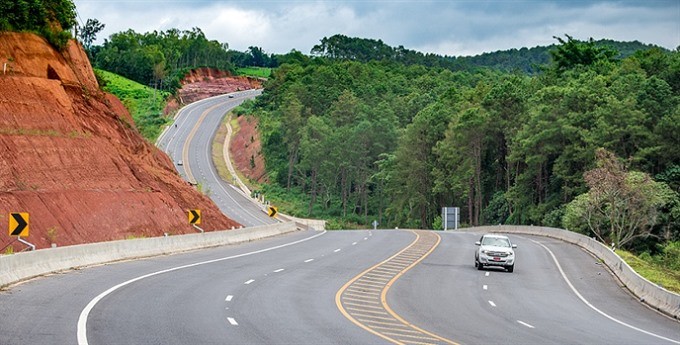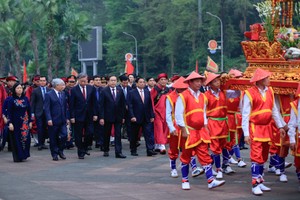
Dong made his remarks during the ninth GMS Economic Corridors Forum, themed “Deepening and Widening Benefits of the Economic Corridors through Inter-sectoral Synergies.” The forum, co-organised by Vietnam’s Ministry of Planning and Investment and the Asian Development Bank (ADB), attracted ministers, vice-ministers, senior officials, development partners and representatives of the private sector from the six GMS countries.
GMS co-operation in general and the forming of economic corridors in particular, with the support of ADB and development partners, would help the GMS countries fully tap their development potential and achieve equitable and sustainable development, Dong said.
“The strengthening of co-operation within member countries in the GMS region would help us achieve a common strategy which is fortifying linkages, enhancing competitiveness and community spirit,” he added.
To achieve these goals, Dong stressed the need to improve the transport system, particularly the transport links that formed the base of the envisioned corridors, facilitating trade and hastening the development of industries along the economic corridors.
Ramesh Subramaniam, director general of the ADB’s Southeast Asia Department insisted on the need to build country-linking transport in multiple modes, including roads, railway and inland waterways. But simply building the infrastructure is not enough, he said.
“Deepening and widening connectivity along the GMS economic corridors requires the upgrading and enhancement of transport infrastructure, but the crucial question now is how to ensure that these infrastructure links will yield their intended benefits in terms of increased trade flows, investment activity, industrial growth, employment, and incomes,” Subramaniam said.
According to ADB’s assessment, GMS countries should strengthen infrastructure connectivity within the sub-region, boost the mobilisation of finance resources through Public-Private Partnership (PPP) form, reduce non-tariff barriers and facilitate trade within the GMS and between the sub-region and other regions.
The larger goal is to build a Greater Mekong Sub-region of peace and stability in security and politics, dynamism and connectivity in economy, sustainability in the environment and harmony in social affairs.
The forum also discussed the promotion of environmentally sustainable power trade in the region; the mobilisation of private sector investment into GMS infrastructure; local area development along the GMS economic corridors; ensuring the growth of regional e-commerce confers benefits for society; and the promotion of safe and environment-friendly agro-based value chains in the GMS.
The GMS countries formed the forum in 2008 to bolster efforts to ensure the region’s inter-country transit links facilitate not only the movement of people, but also trade and other economic activities.
The ADB has supported the establishment of the East-West, North-South, and Southern GMS Economic Corridors since 1998 to promote economic growth and integration in the sub-region.
























